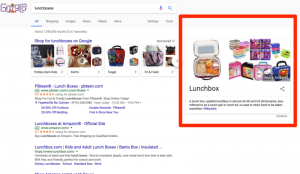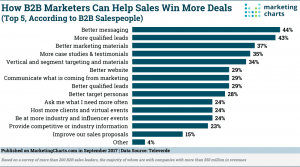What is account-based marketing, and should you adopt it? Columnist Kristie Colby suggests how to implement ABM within your organization and how to use technology to scale your organization’s ABM capabilities.

Account-based marketing (ABM) is a trending topic in B2B marketing, building in popularity over the past few years. In 2016, more than 70 percent of B2B companies had staff dedicated to ABM programs, compared to just 20 percent the previous year, according to a study by SiriusDecisions. In 2017, B2B marketers are looking to refine their approach, leverage new tools, and better focus their investment on critical key accounts.
The concept of ABM hinges on the convergence of Sales and Marketing — two historically divided sectors — working together to define key accounts and develop campaigns designed to engage target prospects. A successful ABM program involves building brand awareness, engaging target prospects and growing customer accounts, all in a highly targeted fashion.
Sales & marketing success metrics
With ABM programs, Sales and Marketing share goals, create cross-departmental assets, and execute against a unified strategy. Companies that already have a strong alignment between Sales and Marketing have an advantage when implementing successful ABM programs.
ABM programs often instigate a shift in B2B marketing KPIs, away from traditional lead generation metrics (such as lead volume, marketing qualified leads and cost) toward engagement-focused metrics (such as content engagement, contact with target prospects, meetings, sales opportunities and closed deals), which align closely with Sales success measurements.
List segmentation and content alignment
An essential element of ABM campaigns is list segmentation and content alignment. Once a target account list has been determined, it should be segmented to strategically deliver the most appropriate content and messaging to the right person at the right time. Common ways that B2B lists are segmented include:
- By industry
- By location
- By company size, number of employees or revenue
- By job title, function
- By value to the organization
I suggest that B2B marketers consider using multiple levels of segmentation. For example, segment key accounts first by value to the organization; then, filter by industry or job function. This multi-segment approach enables marketers to apply the appropriate amount of focus to accounts based on their value and better engage prospects with content that is relevant to their specific industry or job function. The options for list segmentation are directly influenced by list size (i.e., it’s not very efficient to have hundreds of lists with just a handful of prospects).
Depending on the technology stack in place, lists can also be segmented based on prospect actions such as content download, web page visit, webinar attendance or sales contact. Timeliness and frequency of content delivery can be based on prospect actions in combination with the industry, company size, job function and so on.
Utilize diverse & personalized content
B2B marketers should provide diverse and personalized content as part of their ABM program. In my experience, this generates a significantly higher engagement rate.
Develop content that solves problems and creates solutions for each specific target segment. Content messaging should be meaningful at the account level (solving the overarching business need) and at the individual buyer level (solving a person’s or department’s need). Remember that you are selling to people, not just the business at large.
Here are a few tips to consider when personalizing content:
- Diversify content to align with different marketing channels. Consider blog posts, white papers, e-books, case studies, video and infographics.
- Utilize dynamic content to personalize ad copy, the website experience and email communication, based on the prospect’s known behavior, previous actions and level of engagement.
- Retain consistent and compelling messaging and visual cues to support brand identity and credibility.
Select enabling technology
It is important to leverage technology and data as you’re developing a successful ABM strategy. Recently, there has been a surge in products/vendors that serve the ABM space. Selecting the appropriate technology or vendor can be challenging.
I suggest talking with industry peers and speaking with B2B marketers already using various platforms and solutions. In addition, the ABM Leadership Alliance was created by ABM technology and data vendors to help B2B marketers define their requirements and select appropriate solutions for their tech stack. Ultimately, nothing will replace due diligence when it comes to determining the best technology to enable your ABM program.
ABM adoption continues to accelerate
ABM campaigns are proving successful for B2B marketers and show no sign of slowing in their adoption. Developing and segmenting target account lists enables marketers to create personalized and customized content/messaging for each unique buyer segment. Partnering with the right technology partners and data vendors will help organizations scale their ABM efforts for even greater success.
Some opinions expressed in this article may be those of a guest author and not necessarily Marketing Land. Staff authors are listed here.
Marketing Land – Internet Marketing News, Strategies & Tips
(45)
Report Post






